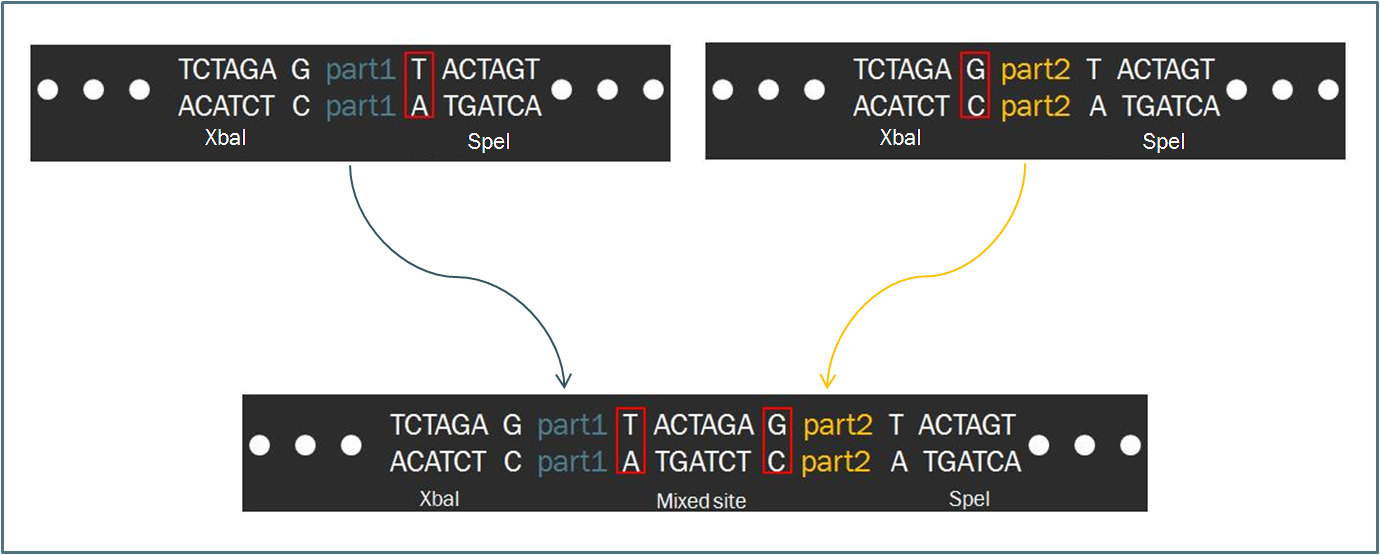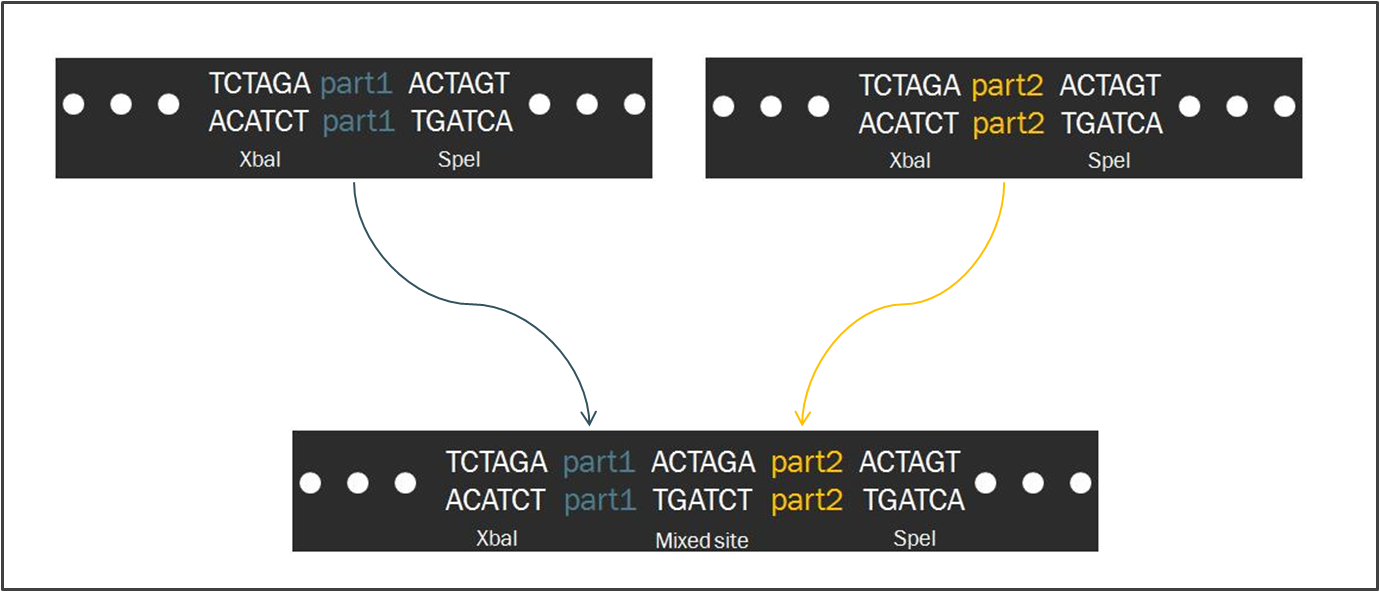Team:BrownTwo/Implementation/syntf
From 2008.igem.org
|
The Biofusion StandardCompared to other fields in biology, synthetic biology devotes a considerable amount of attention towards the standardization of parts and of practice. The inspiration for such a focus stems from similar concepts in engineering, which depends upon well-characterized components for the design of complex systems with predictable and reliable behavior. Indeed, as readers of this wiki may know, the iGEM competition focuses on the use of the Biobrick standard, which allows for an idempotent approach to cloning recombinant DNA. The Biobrick standard constitutes a conserved sequence of four restriction enzyme cut sites that envelop a genetic part, whether it be a coding gene, a promoter, or some other functional piece of DNA. According to the process of Standard Assembly, one can then ligate two such parts together after following a formulaic scheme of restriction digest reactions. The end result is a linking of two two genetic parts bounded by the same four restriction sites in a reproducible fashion. Such a system facilitates the pairing of two parts, allowing for the creation of endless combinations while constructing a device.
As a slight deviation from this system, our synthetic transcription factors were designed according to the Biofusion standard, which was developed by the Silver lab at Harvard University. Biofusion parts have an identical arrangement of restriction digest sites relative to the part, with one exception.
However, Biofusion parts lack these additional nucleotides. Thus, when two Biofusion parts are fused together in the same manner, the parts are separated by only six nucleotides.
Transcription factorsExcluding our proof of principle design, our limiter device is composed entirely of synthetic transcription factors created according to the Biofusion standard. The laboratory of Dr. Pamela Silver at Harvard developed synthetic transcription factors for the construction of a novel “memory device” in Saccharomyces cerevisiae. While the details of this device are not essential to understanding our own gene network, it is important to discuss the significance of these transcription factors to our design. A transcription factor is composed of a binding domain, which targets the protein either an activation domain or a repression domain, which Transcription factors are composed of a standard activation or repression domain linked to a variable binding domain. The binding domain is chosen such that it matches. Other features of these . A handful of these parts were available in the Registry, but we found it necessary to
Modularity – in order to modify the design to limit the expression of a given gene of interest, one must study a gene pathway map and identify a single link between the gene of interest and a transcription factor that regulates the expression of that gene Stipulation: If G is a transcription factor that is known to auto-regulate, one will have to alter the modeling to account for this situation. modifications to current scheme:
Possible further modifications to these transcription factors include the use of different regulation domains, Involves the consideration of multiple binding sites |
 "
"

